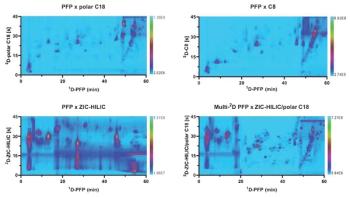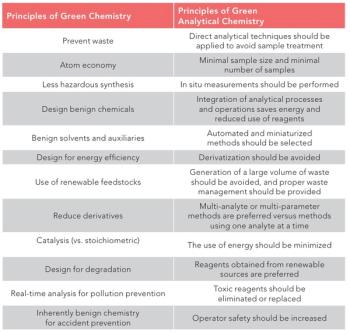
Measuring Tooth Discoloration from Coffee with HPLC
Researchers measured bovine tooth enamel samples with colorimetry, high-performance liquid chromatography (HPLC), and ultraviolet-visible (UV-Vis) spectrophotometry to develop a comprehensive understanding of coffee-induced tooth discoloration by examining the individual and combined effects of CGA and pigments and determining how their concentrations are affected by coffee roast level.
A recent study investigating the associations of coffee roasting level, chlorogenic acid (CGA) content, absorbance level, and their combined effects with tooth discoloration used high-performance liquid chromatography (HPLC) and ultraviolet-visible (UV-Vis) spectrophotometry to measure CGA content in the analyzed bovine tooth enamel specimens. Results of the study were published in Journal of Oral Sciences (1).
Discoloration of teeth is often the result of dietary habits and lifestyle choices; among the culprits, coffee stands out as a particular culprit due to both its widespread consumption and significant staining potential (2,3). Although evidence indicates the tannins, CGAs, and chromogens contained in coffee are linked to discoloration, the components that have the most substantial effects, and the mechanisms involved, are unclear, although CGA content in coffee has been determined to positively correlate with tooth discoloration (4,5).
Specific coffee consumption habits are potential factors in the degree of tooth discoloration; the temperature of the beverage notably changes the staining potential, as hot coffee is associated with greater staining (6). The roasting level of coffee should also be considered. Coffee roasts are typically classified as light, medium, and dark, each roast level requires different temperatures and duration of roast (7), with these differences affecting the flavor and chemical composition of the coffee (8). Coffee pigments, primarily melanoidins formed during the roasting process, may cause dental discoloration by their being deposited on the tooth surface of the tooth (9).
Two types of Arabica (Coffea arabica) and two types of Robusta (Coffea canephora) raw beans (Ethiopia Yirgacheffe Arabica, Colombia Supremo Arabica, Vietnam Robusta, Uganda Robusta; Greenearth Coffee, Yongin, Republic of Korea) were roasted to three levels (205°C for 13 min for light roasts, at 210°C for 20 min for medium roasts, and at 220°C for 25 min for dark roasts) . Beans were ground and 15 g of the resulting coffee powder was inserted into a drip coffee maker containing 250 mL of distilled water. The brewed coffee was transferred to a plastic container for immersion of tooth specimens, with a small portion was saved for HPLC analysis of CGA content and absorbance measurements (1).
The researchers found that medium roasts induced the greatest discoloration in the specimens, with those immersed in Ethiopia Arabica exhibiting the greatest color difference based on CIEDE2000 (ΔE00 at 72 h: 13.51 ± 4.63). Light roasts induced the least staining, despite having the highest CGA content. Dark roasts showed the highest absorbance, indicating a higher pigment concentration. Friedman analysis revealed a significant difference in color change in relation to roasting level for all coffee types. The authors of the article reported that these findings indicate that tooth discoloration is indeed caused by the complex interaction of CGA, melanoidins, and roasting level, and because of the interplay of these factors, medium roasting had the greatest effect on discoloration (1).
References
1. Kim, S.; Larnani, S.; Taymour, N.; Chung, S. H.; Srinivasan, M.; Kim, Y. J.; Park ,Y. S. Effect of Coffee Roasting Level on Tooth Discoloration. J. Oral Sci. 2024.
2. Ciaramelli, C.; Palmioli, A.; Airoldi, C. Coffee Variety, Origin and Extraction Procedure: Implications for Coffee Beneficial Effects on Human Health. Food Chem. 2019, 278, 47-55. DOI:
3. Nigra, A. D.; Teodoro, A. J.; Gil, G. A. A Decade of Research on Coffee as an Anticarcinogenic Beverage. Oxid. Med. Cell Longev. 2021, 4420479. DOI:
4. Kim, S.; Chung, S. H.; Kim, R. J. Y.; Park, Y. S. Investigating the Role of Chlorogenic Acides and Coffee Type in Coffee-Induced Teeth Discoloration. Acta Odontol. Scand. 2024, 82, 1-8. DOI:
5. Kim, S.; Lee, C. H.; Ma, S.; Park, Y. S. Whitening Efficacy of Toothpastes on Coffee-Stained Teeth: An Emanuel Surface Analysis. Int. Dent. J. 2024, 74, 1233-1238. DOI:
6. Kim, S.; Song, J. S.; Yoon, J.; Franklin, G-G. F.; Park Y. S. Influence of Coffee Characteristics on Tooth Discoloration. Am. J. Dent. 2024, 37 (4), 171-176.
7. Liang, N.; Xue, W.; Kennepohl, P.; Kitts, D. D. Interactions Between Major Chlorogenic Acid isomers and Chemical Changes in Coffee Brew that Affect Antioxidant Activities. Food Chem. 2016, 213, 251-259. DOI:
8. Moon, J. K.; Yoo, H. S.; Shibamoto, T. Role of Roasting Conditions in the Level of Chlorogenic Acid Content in Coffee Beans: Correlation with Coffee Acidity. J. Agric. Food Chem. 2009, 57 (12), 5365-5369. DOI:
9. Yu, J.; Hu, N.; Hou, L.; Hang, F.; Li, K.; Xie, C. Extraction Methods of Melanoidins and its Potential as a Natural Pigment. Food Sci. Technol. 2023, 43, e113322. DOI:
Newsletter
Join the global community of analytical scientists who trust LCGC for insights on the latest techniques, trends, and expert solutions in chromatography.




